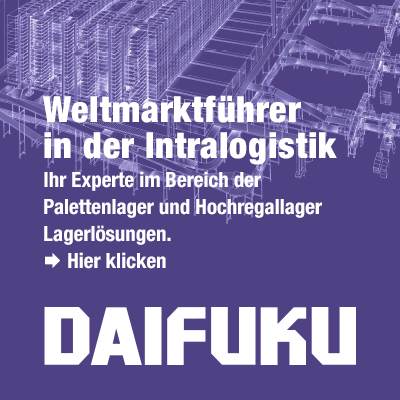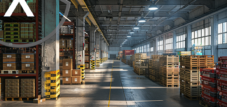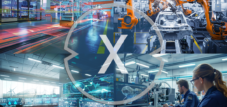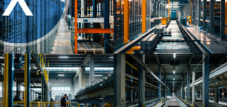The cold chain industry: challenges, opportunities and new developments in logistics and intralogistics
Language selection 📢
Published on: July 31, 2024 / update from: July 31, 2024 - Author: Konrad Wolfenstein

The cold chain industry: challenges, opportunities and new developments in logistics and intralogistics - Image: Xpert.Digital
📦❄️ The essential role of the cold chain industry in modern food supply
🥶 Difficult requirements and innovative opportunities in the cold chain industry
The cold chain industry is an essential part of modern food supply, covering a wide range of products. Perishable items include dairy products, frozen foods, and fresh produce such as fruits and vegetables. Unlike traditional warehousing, storing these foods in cold storage requires precise temperature control, strict inventory management and rapid order fulfillment to maintain product quality and safety standards. These special requirements create unique challenges, but also offer numerous opportunities for innovation and efficiency improvements.
In cold storage warehouses that work for supermarkets and restaurant chains, the stocks are characterized by a high variety of products, small batches and rapid turnover of goods. Essential to this process is managing goods based on expiry dates, best before dates and delivery information. This requires a continuous flow of putaway, retrieval and picking based on specific requirements. Any delay or inaccuracy can have a significant impact on product freshness and overall quality.
Traditionally, cold storage of food has relied heavily on manual labor. Tasks such as picking, packing and inventory management were often performed by hand. However, this approach regularly resulted in inefficiencies, higher labor costs, and increased risk of errors. However, with the advent of automation technologies, the industry has witnessed a remarkable shift towards more streamlined and optimized operations.
🤖💼 Automation and digitalization in the cold chain industry
Automation has the potential to fundamentally transform the cold chain industry. By using modern technologies such as robotics, artificial intelligence (AI) and sophisticated warehouse management systems (WMS), many processes can be made more efficient and error-free. For example, automated storage and picking systems enable more precise inventory management and faster order processing. Robots can pick products faster and more accurately than humans, increasing efficiency and minimizing errors.
Another advantage of automation is the reduction in dependence on manual labor, which is a significant advantage given the skills shortage in many countries. In addition, automated systems can operate 24/7, significantly increasing warehousing and distribution capacities.
In addition to automation, digitalization also plays a crucial role. Modern warehouse management systems are capable of processing and analyzing large amounts of data in real time. This allows for better prediction of demand and inventory levels, resulting in more optimized inventory management. By integrating IoT (Internet of Things) sensors, temperature and humidity in warehouses can be continuously monitored and controlled to ensure optimal storage conditions.
⚠️🛠️ Challenges and risks
Despite the numerous benefits that automation and digitalization bring, the cold chain industry also faces significant challenges. One of the biggest challenges is the significant investment required to implement these technologies. Smaller companies may find it difficult to afford to invest in expensive automation systems, which could cause division within the industry.
Another problem is the dependence on technical systems. When an automated system fails, the impact can be serious. It is therefore essential to have robust backup systems and contingency plans in place to minimize downtime and ensure continuity of operations.
The security of the stored and transmitted data is also an important aspect. Data breaches or cyberattacks could jeopardize the integrity of the entire supply chain, which could have both financial and security consequences. Therefore, it is crucial to implement robust cybersecurity measures to protect systems from such threats.
🌎♻️ Sustainability in the cold chain industry
Another important issue in the cold chain industry is sustainability. Cold storage and refrigerated logistics require significant amounts of energy, leading to increased CO2 emissions. To address this, more and more companies are turning to greener technologies and practices.
Energy-saving cooling systems, the use of natural refrigerants and the optimization of transport routes are just some of the measures taken by the industry. Such initiatives not only help reduce environmental impact, but can also result in significant cost savings in the long term. In addition, many companies are promoting the recyclability of packaging materials and the reduction of food waste through more precise inventory management and better planning tools.
🔮🚀 Innovations and future prospects
The future of the cold chain industry promises further significant innovations and developments. Technologies such as blockchain could play a larger role in the future by improving transparency and traceability within the supply chain. Every movement of a product could be recorded in an immutable digital register, increasing trust in the supply chain and ensuring the safety of products.
Drones and autonomous vehicles could also be integrated into cold chain logistics, especially in remote or difficult-to-reach areas. Such technologies have the potential to significantly reduce delivery times and increase delivery efficiency.
The cold chain industry faces both significant challenges and exciting opportunities. With advancing automation and digitalization, new opportunities are opening up to increase efficiency, reduce costs and ensure the safety and quality of products. At the same time, it remains essential to face the challenges and develop innovative solutions to overcome these obstacles. Continuous adaptation and development will determine how successful the industry will be in the coming years.
📣 Similar topics
- 🌐 Digitalization in logistics: Automated intralogistics for the future
- 🔧 Challenges and solutions in modern warehousing
- 🚀 Robots, drones and AGVs: warehouse automation technologies
- 📈 Efficiency and error reduction through warehouse automation
- 🏷️ Intelligent picking and warehouse management systems
- 📊 Use of data and IoT to optimize warehouse processes
- 🌟 Future prospects of intralogistics: AI and machine learning
- 🔍 Decision criteria for selecting automated systems
- 💼 Competitive advantages through automation in intralogistics
- 🏭 Industry 4.0: The transformation in warehousing
#️⃣ Hashtags: #Intralogistics #warehouse automation #digitalization #Industry4.0 #futurecapability
Xpert partner in warehouse planning and construction
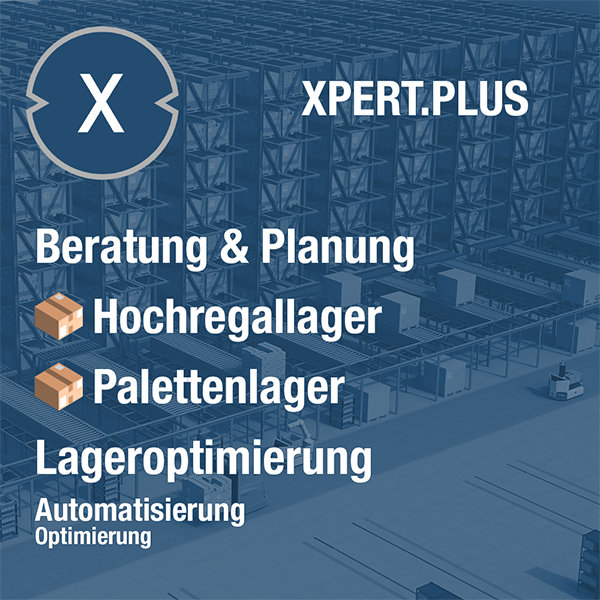
Xpert.Plus warehouse optimization - high-bay warehouses such as pallet warehouses consulting and planning
We are there for you - advice - planning - implementation - project management
☑️ Smart City & Factory: Industry expert for energetic 5G buildings and halls as well as advice and installation of solar systems
☑️ Xpert.Plus - logistics consulting and logistics optimization
☑️ Industry expert, here with his own Xpert.Digital Industry Hub with over 2,500 specialist articles
I would be happy to serve as your personal advisor.
You can contact me by filling out the contact form below or simply call me on +49 89 89 674 804 (Munich) .
I'm looking forward to our joint project.
Xpert.Digital - Konrad Wolfenstein
Xpert.Digital is a hub for industry with a focus on digitalization, mechanical engineering, logistics/intralogistics and photovoltaics.
With our 360° business development solution, we support well-known companies from new business to after sales.
Market intelligence, smarketing, marketing automation, content development, PR, mail campaigns, personalized social media and lead nurturing are part of our digital tools.
You can find out more at: www.xpert.digital - www.xpert.solar - www.xpert.plus



